How a team of Indonesian conservationists is rehabilitating illegally traded Javan slow lorises so they can reclaim their lives in the wild.
Once in 2020 and again in January 2024, I had the opportunity to join an International Animal Rescue (IAR) team as they released rehabilitated Javan slow lorises back into their rainforest home in Gunung Halimun Salak National Park, a conservation area in Indonesia’s West Java province. With a total area of 87,699 hectares, it is the largest terrestrially protected habitat for wildlife on the island of Java. This area has become the predominant habitat for various key species, including the Javan slow loris (Nycticebus javanicus).
Most of the lorises being released were surrendered by members of the community and rescued from illegal trade by the Natural Resources Conservation Agency (BKSDA) in the West Java region. Post-rescue and pre-release, they spend extensive time at the IAR Primate Rehabilitation Centre in Ciapus, West Java. It is the largest rescue centre for slow lorises and the only one in Indonesia specializing in their rehabilitation and release. To date, the centre has saved more than 1,000 lorises, with more than 670 returning to the wild in the past 14 years.
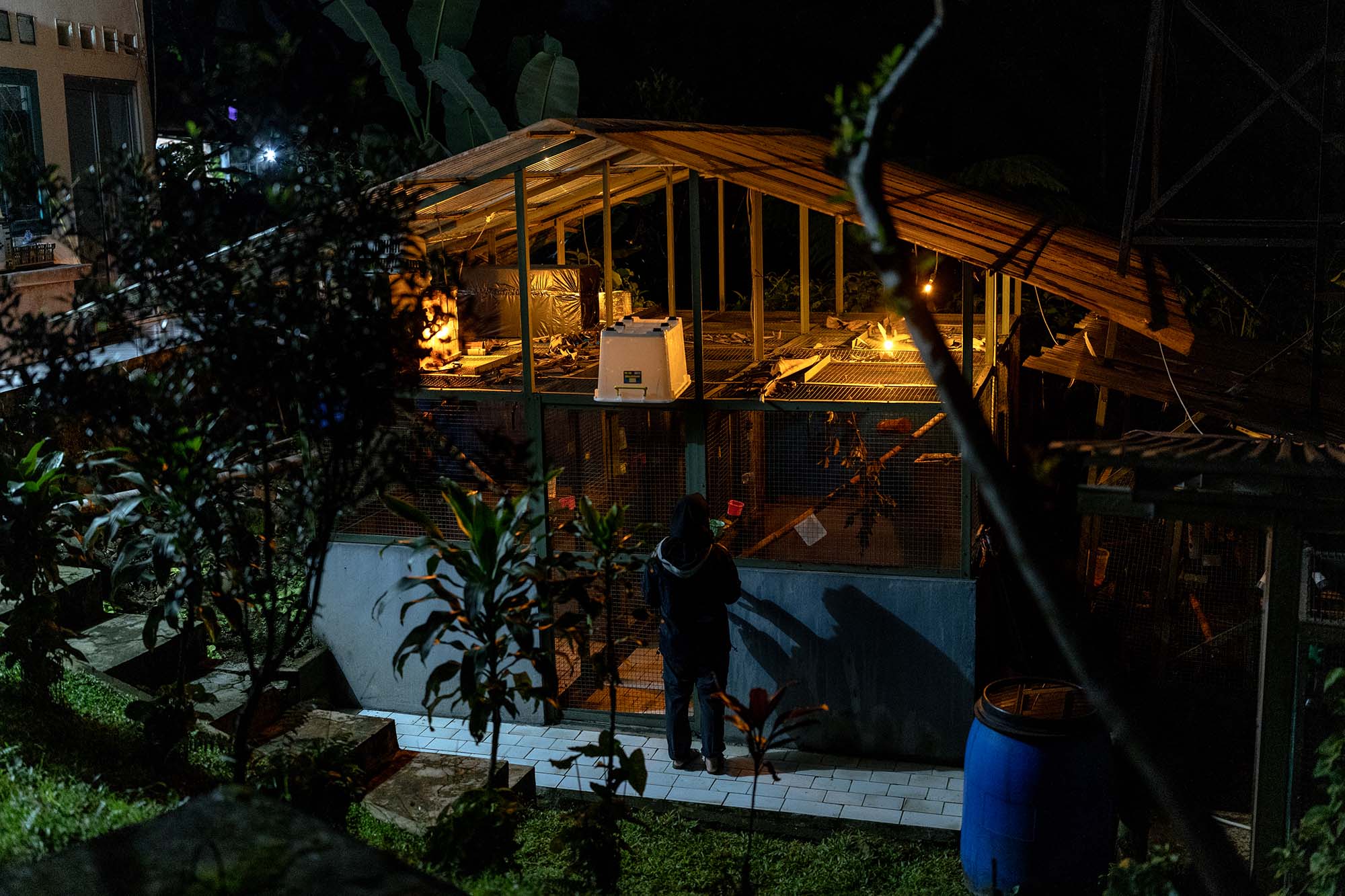
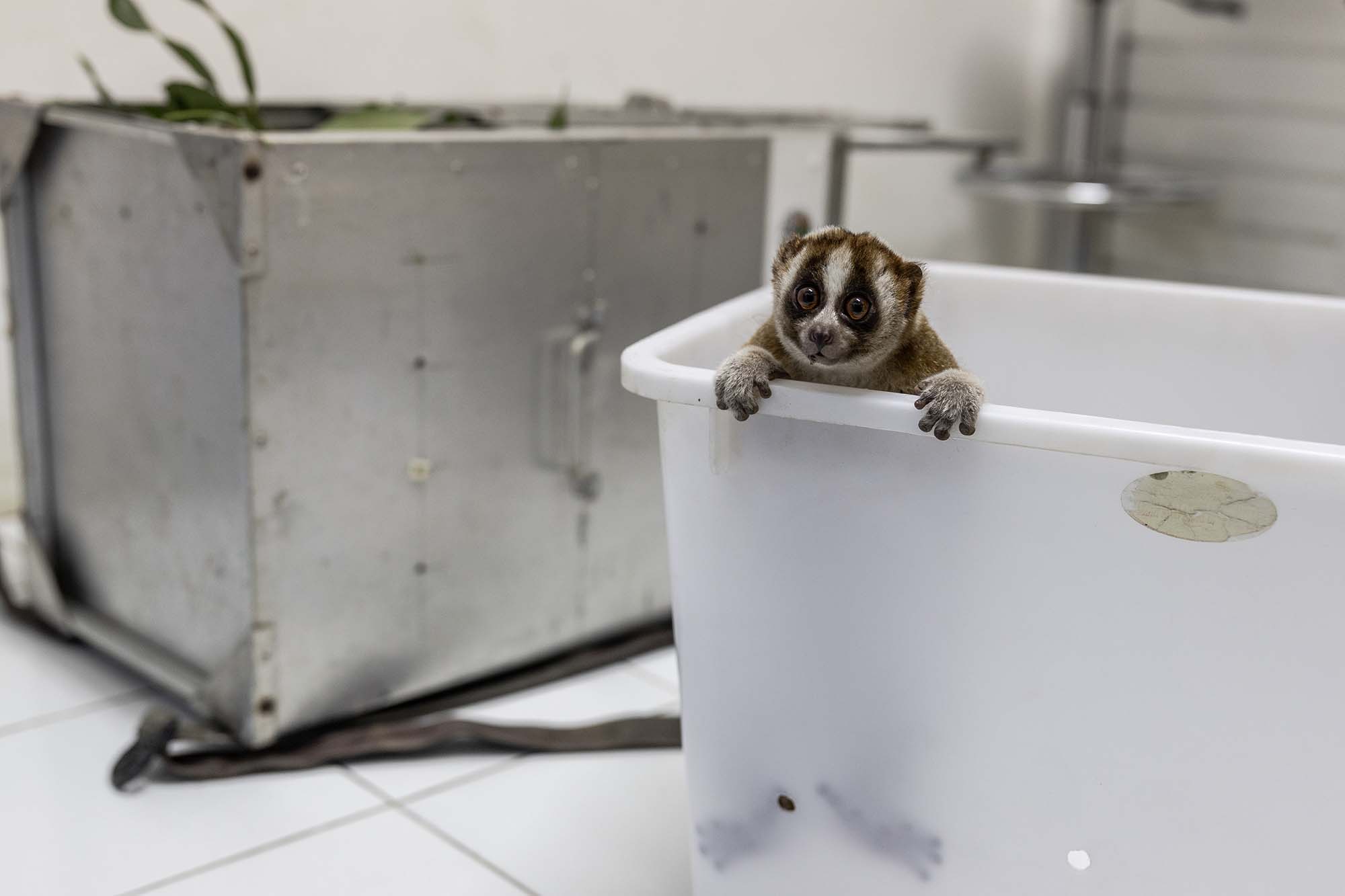
Left: Fathia Rosatika from IAR checks the Javan slow loris in a cage at the IAR Rehabilitation Centre on January 18, 2024, in Bogor, West Java, Indonesia. Right: A Javan slow loris at the IAR Rehabilitation Centre on January 18, 2024, in Bogor, West Java, Indonesia. Photos: Garry Lotulung.
Before their release, the lorises had undergone a recovery and treatment process to stimulate their natural behaviour. Starting with medical examinations and time in quarantine, they also underwent behavioral observations until they were declared healthy and ready to be translocated for habituation and then final release.
Veterinarian Nur Purba Priambada explains that during habituation, the team in the field continues to observe and record any changes in their behaviour for two to four weeks. Enclosures are erected at the release site using plastic fibre sheets and nets as walls. The team encloses a space with a good diversity of trees and plants that will provide natural food sources for lorises. If, during the habituation period, all the lorises are active and don’t display any abnormal behaviours, then they can finally be set free.
Slow lorises have to go through a long process to restore their wild nature. Their condition when they first arrive at the centre is generally very poor. They are usually suffering from stress, trauma and malnutrition, and they often display behavioral changes because their needs as wild lorises haven’t been met. They have been deprived of a suitable living environment and appropriate food, and they have been unable to behave as they would in the wild.
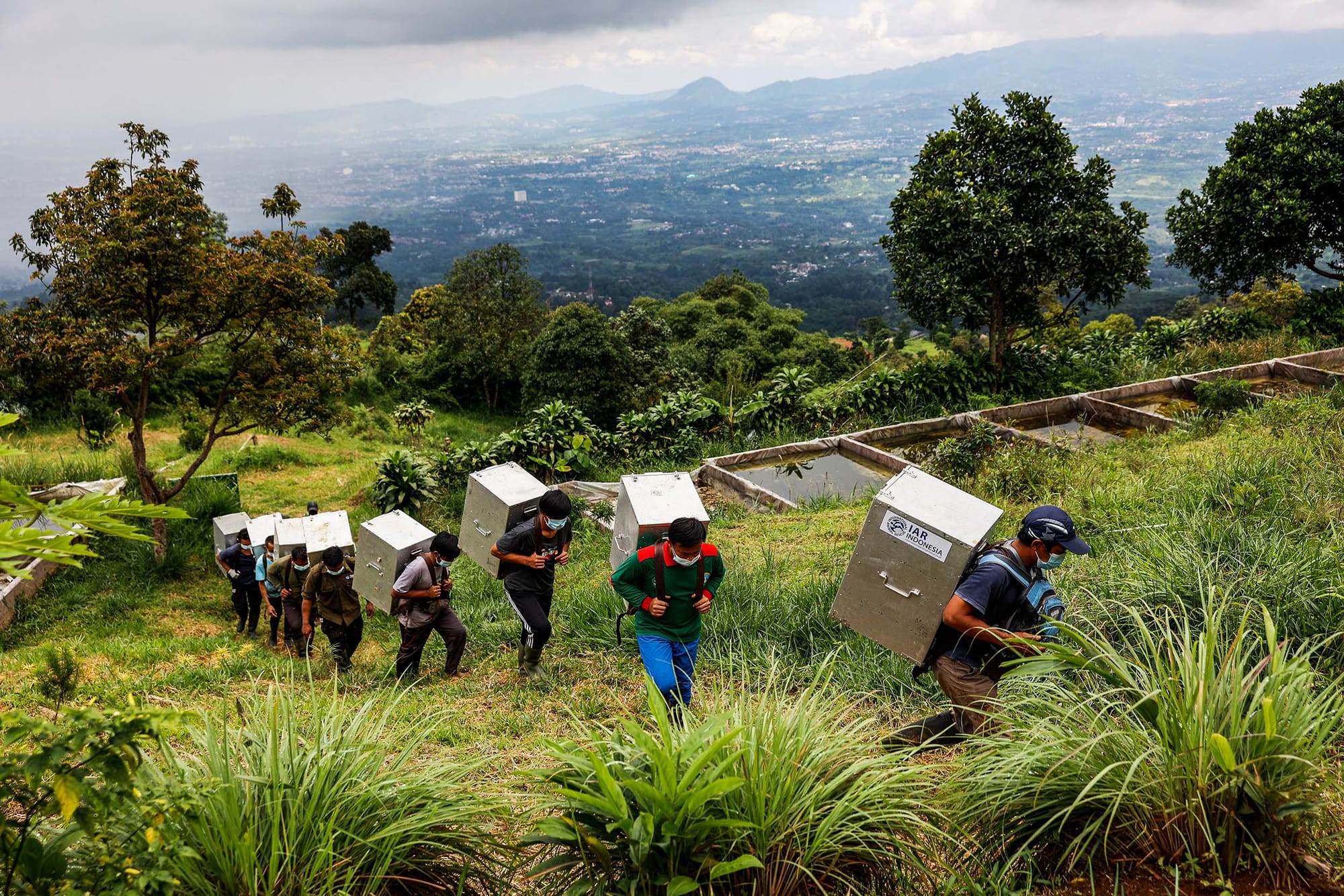
IAR field staff member Nedy says the release operation was carried out by a joint team from BKSDA West Java, IAR and local volunteers. They transported the lorises in special cages as far as the habituation enclosure deep in the forest of Gunung Halimun Salak National Park. “The habituation process enables the lorises to adapt to their new habitat before they are finally granted complete freedom,” Nedy says.
After final release from the forest habituation enclosure, the lorises will be monitored for about six months to ensure they are successfully fending for themselves. To facilitate monitoring, they are first fitted with satellite collars. “The radio collar that we are using has a three-kilometre (two-mile) radius for its signal,” says IAR field monitoring staff member Yanto. “The radio collar will transmit a signal that the receiver will then pick up. We can also use the equipment to measure the distance between the slow loris and our team.”
A monitoring team keeps track of the animals in the forest on a daily basis. They keep records of physical condition, behaviour, food supply and living conditions.
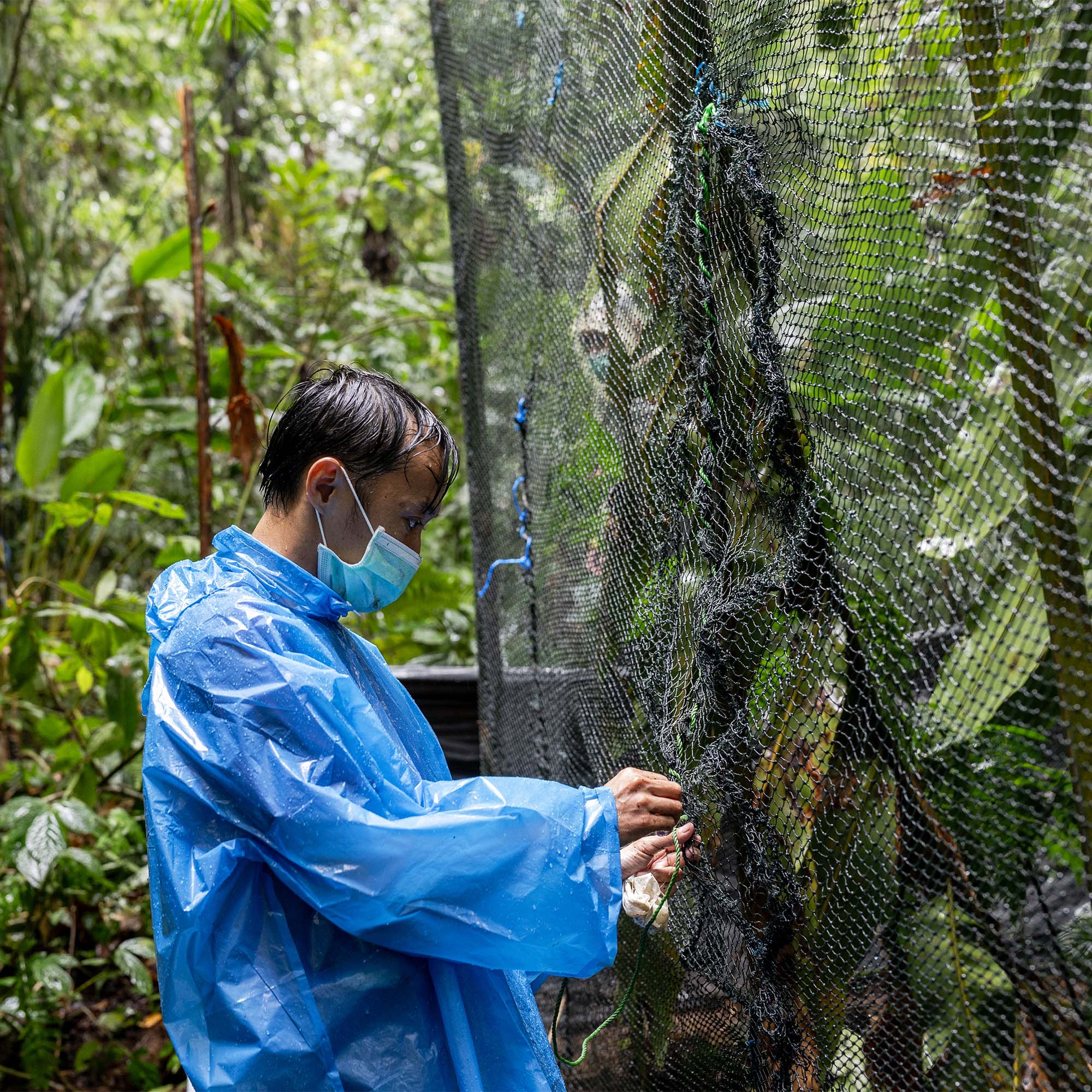
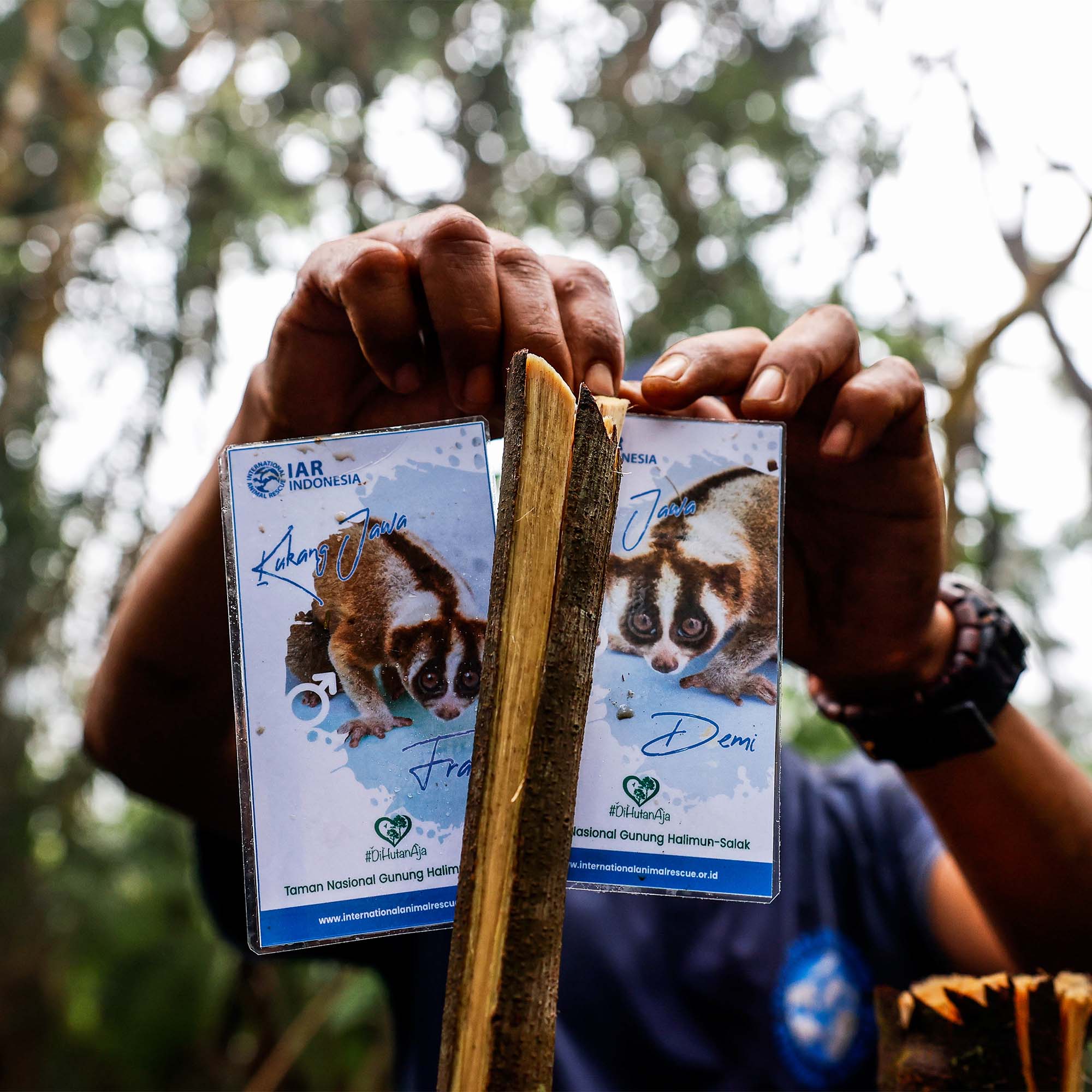
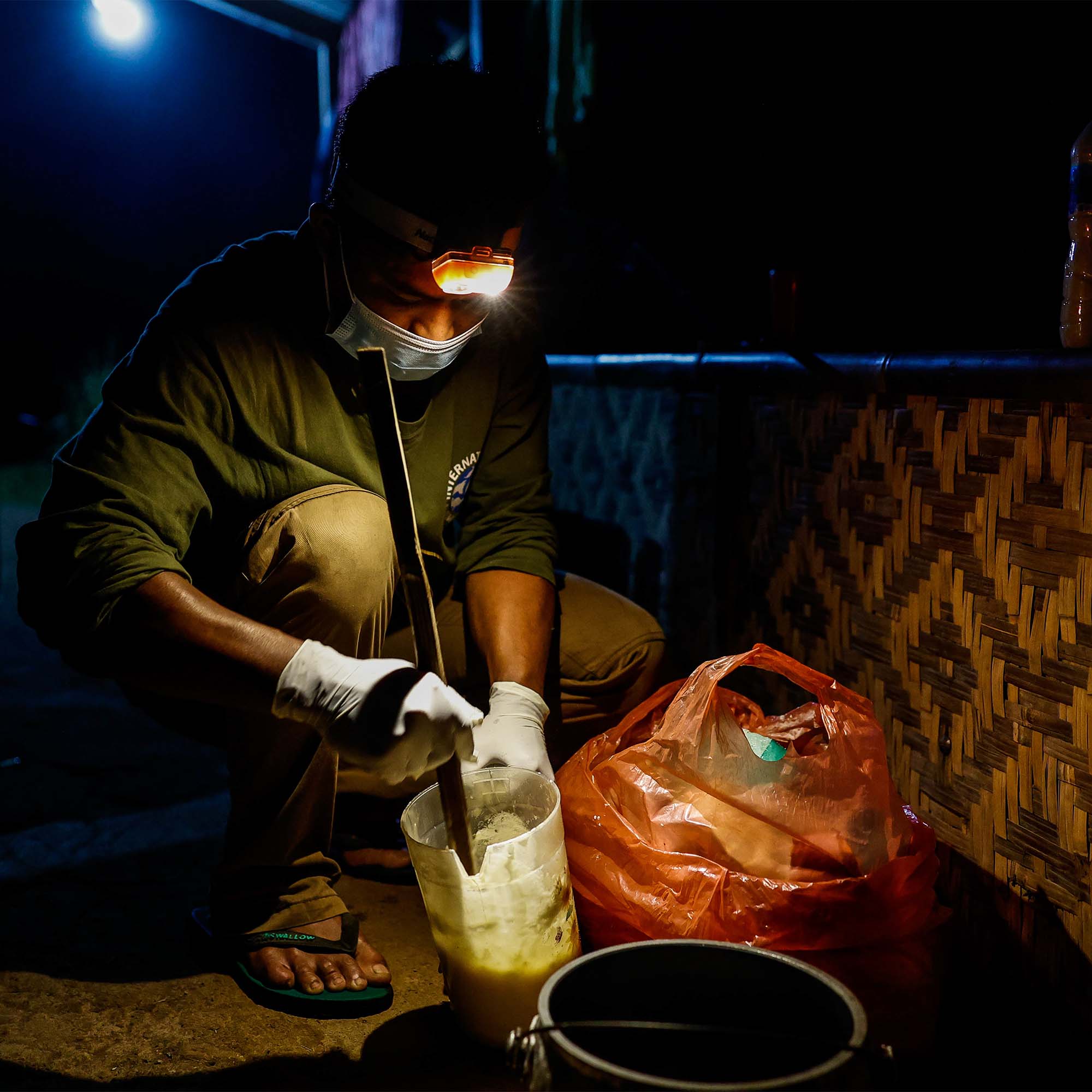
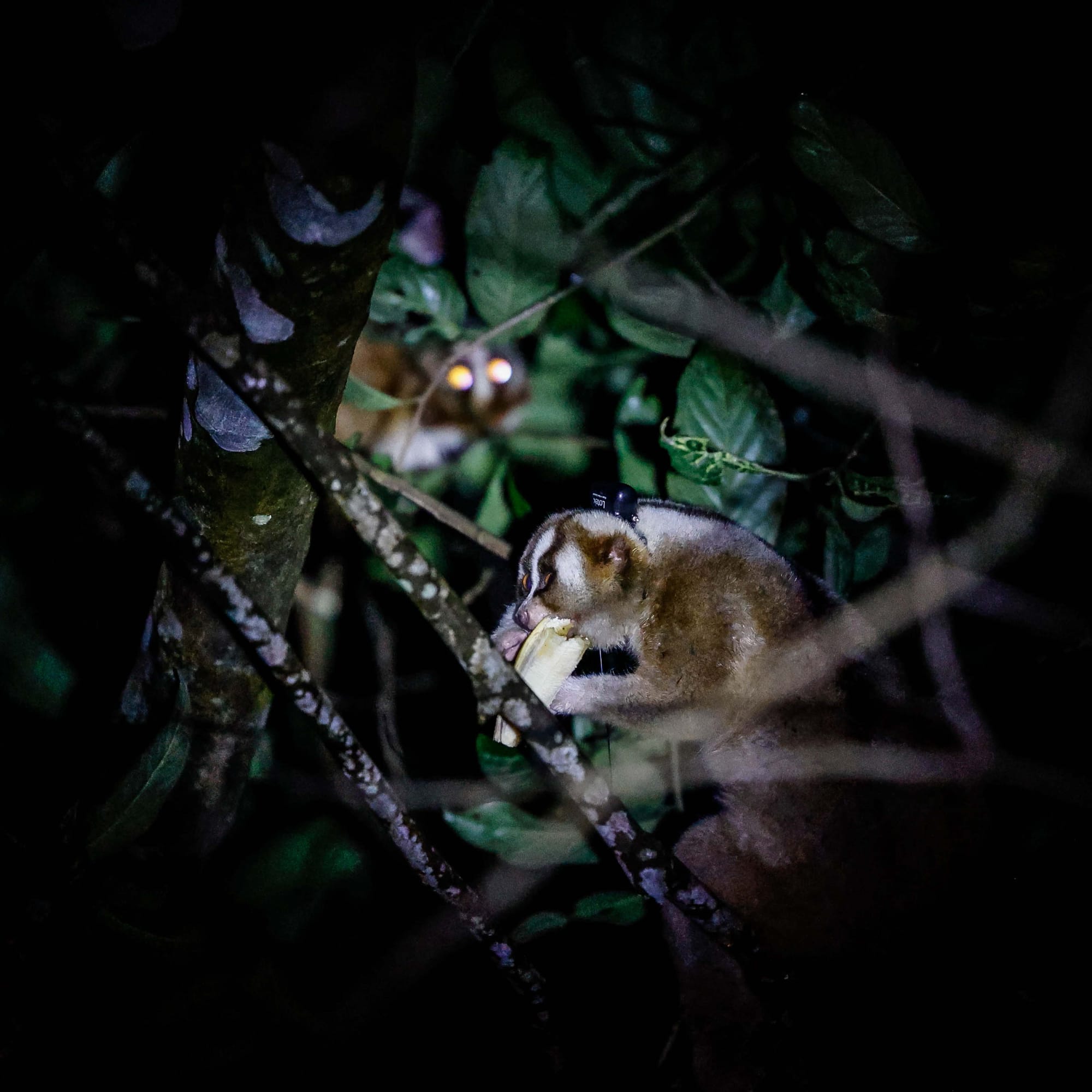
Clockwise from top left: IAR field monitor Riki Saputra checks a habituation enclosure at Gunung Halimun Salak National Park on January 19, 2024; An IAR keeper puts up informational posters during release on December 20, 2020; Javan slow lorises wearing GPS collars eat bananas in their habituation enclosure at Gunung Halimun Salak National Park on December 21, 2020, in Bogor, West Java, Indonesia; IAR field staff member Nedy stirs tree sap to feed to lorises in a habituation enclosure on December 20, 2020. Photos: Garry Lotulung.
Commonly known as “kukang” in Indonesia, the slow loris is also called “malu-malu,” meaning “shy” – a nod to the reclusive nature of this nocturnal primate.
Javan slow lorises are often found looking for food or shelter in agricultural areas such as coffee and rubber plantations and bamboo forests as well as in settlements. That's when they're vulnerable to exploitation, explains Nedy. “Hunters can go in and take them off those trees, put them in crates and send them off for wildlife trade. It happens at any time of the year and at any age or sex. It’s really terrible, and their numbers are just plummeting.”
The illegal slow loris trade has been fuelled in recent years by the popularity of YouTube videos where the nocturnal primates are showcased as exotic pets. This internet craze is contributing toward thousands of animals being poached from the wild and illegally sold for anywhere between US$110 and $210 each. To make them easier to handle, traders clip the slow lorises’ teeth, which can often result in their death through blood loss or infection. According to data from IAR Indonesia, at least 5,500 lorises have been observed in physical and online markets since 2012. Activity peaked in 2017, with over 900 traded.
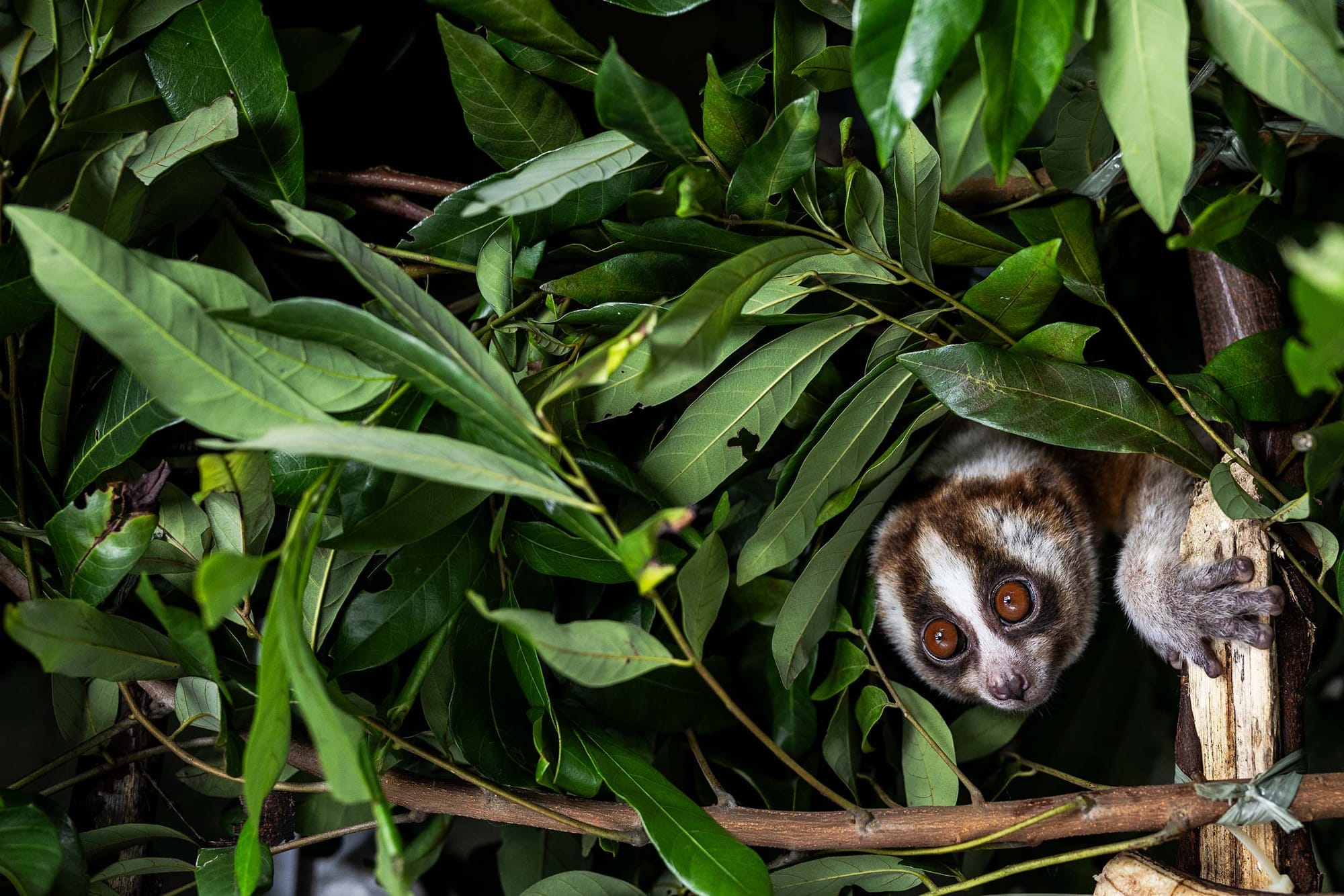
Robithotul Huda, program manager at IAR Indonesia in Bogor, says that in captivity as pets, many slow lorises eventually die as a result of the torture and compromised welfare they experience from being passed through channels of the illegal trade. “Buying a loris as a pet contributes directly to fueling the illegal trade,” he says. “Hunting will continue as long as there is demand. For this reason, we strongly urge the public never to buy or keep slow lorises as pets, because it is synonymous with exploiting them.”
In the wild, lorises lead nocturnal, arboreal lives in the forest canopy, slowly picking their way through branches in search of tree sap and insects. This bears stark contrast with how they’re typically kept in captivity, awake in broad daylight and eating fruit. This treatment is torture for a loris. Bright lights damage their sensitive eyes, and a fruit-filled diet leads to obesity, tooth decay, diabetes and kidney failure.
The Javan slow loris is one of the most threatened species in its genus. It is endemic to the Indonesian island of Java, which is home to 141 million people and has one of the world’s highest human population densities, greatly restricting the animal's island-wide distribution. Aside from hunting and illegal trading, wildlife in Java, including the Javan slow loris, has lost a great deal of its natural habitat over past decades.
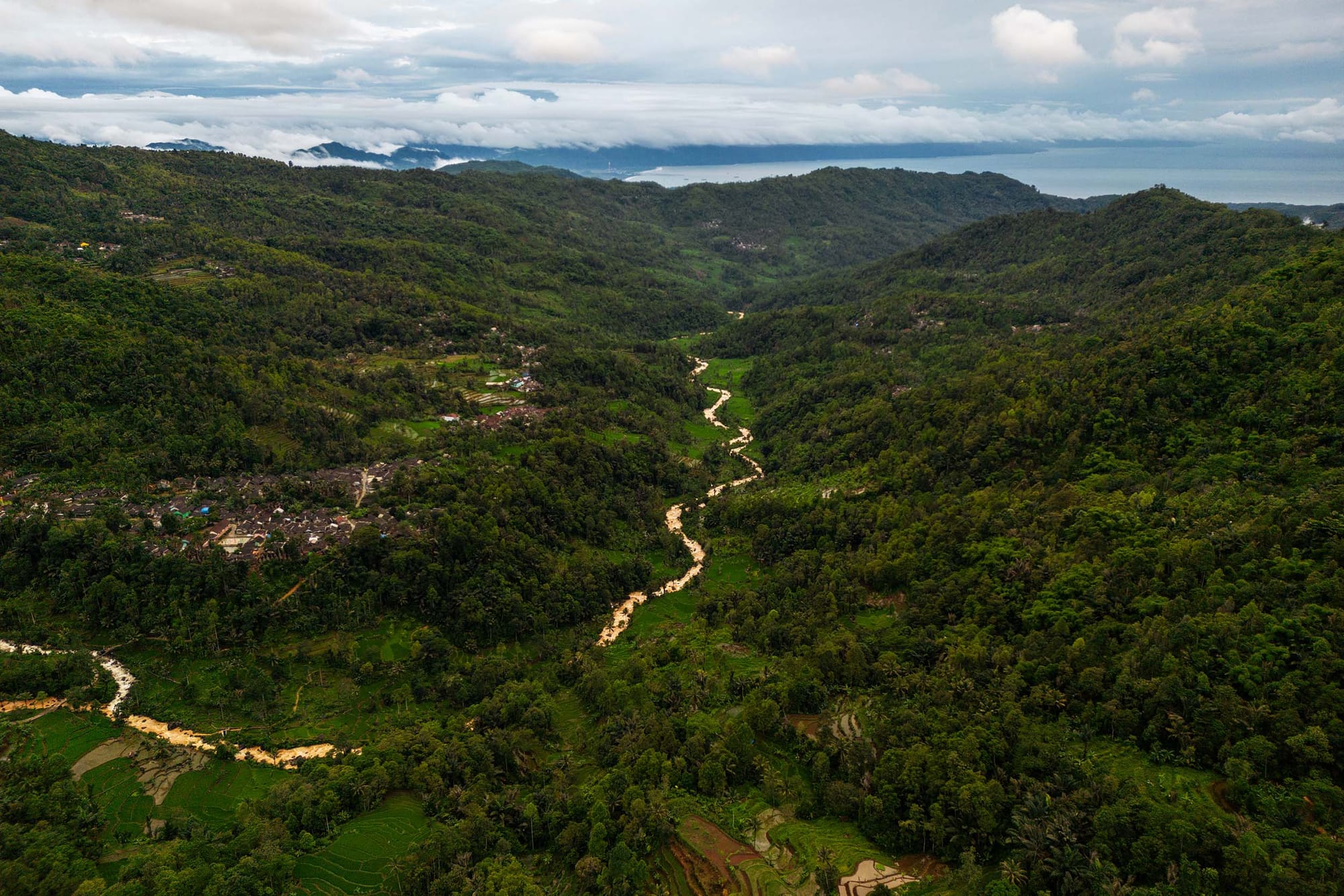
This habitat loss is a major threat to the slow loris’s survival. The development of forest resources through the expansion of smallholder farmland, large-scale monoculture plantations and infrastructure has helped Indonesia achieve economic growth, but it has also resulted in forest loss and decline over the past 25 years: 2,500 hectares were lost each year between 2003 and 2006, according to Forestry Department data, and only about 24 percent of land on Java is currently forested.
Among the world’s 25 most endangered primates, the Javan slow loris has suffered a population decline of at least 80 percent over the past 24 years, and has been classified as critically endangered on the International Union for Conservation of Nature (IUCN) Red List since 2013. Surveys indicate that the species persists at very low densities in unsuitable, fragmented habitats.
“The keeping of slow lorises as pets is having a devastating impact on wild populations, particularly as their natural habitat is also under threat,” says Alan Knight, IAR Chief Executive. “So it’s always extremely uplifting to see animals returning to the wild, where they will be given a second chance to live their lives as nature intended, far from disturbance and interference from human beings.”
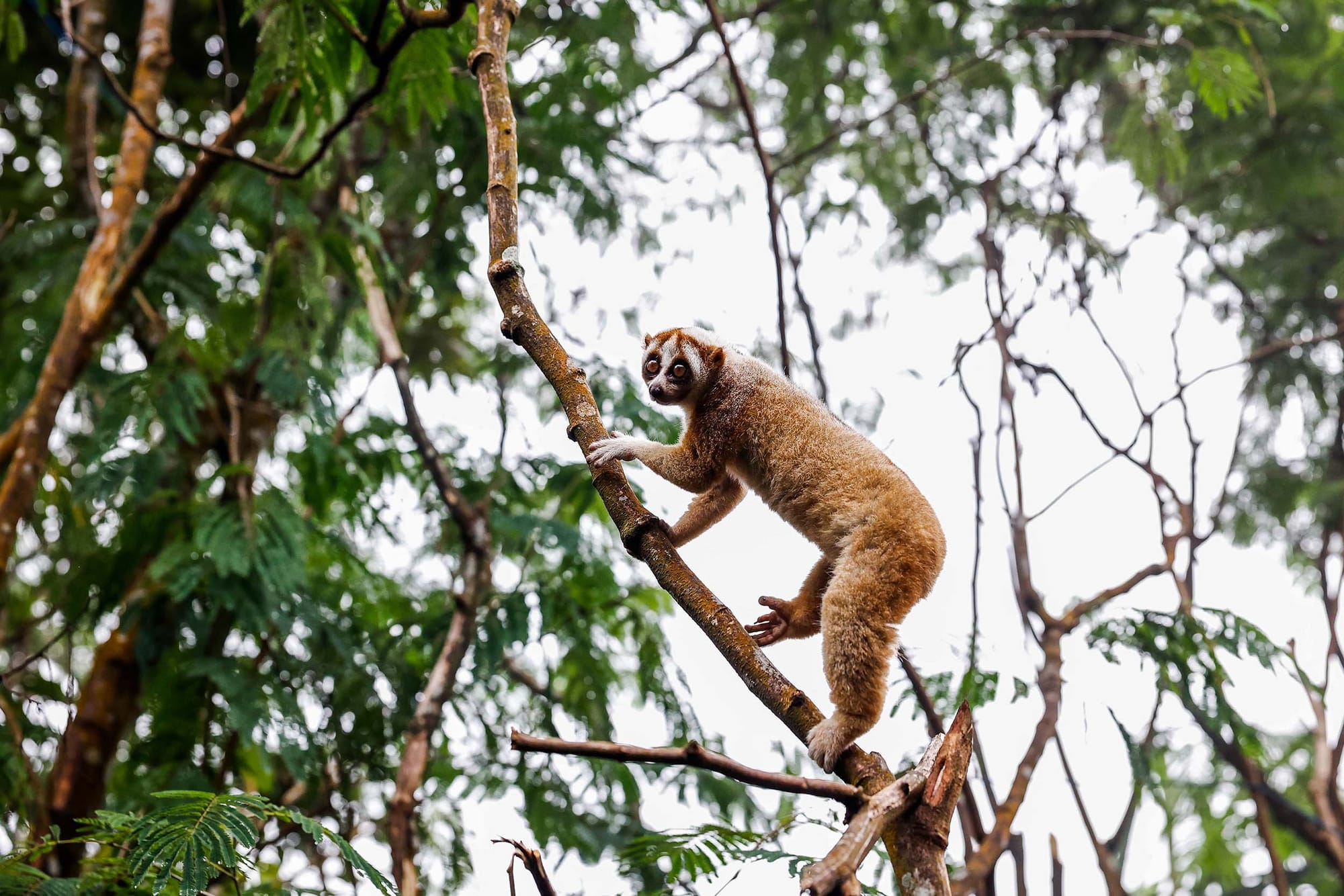


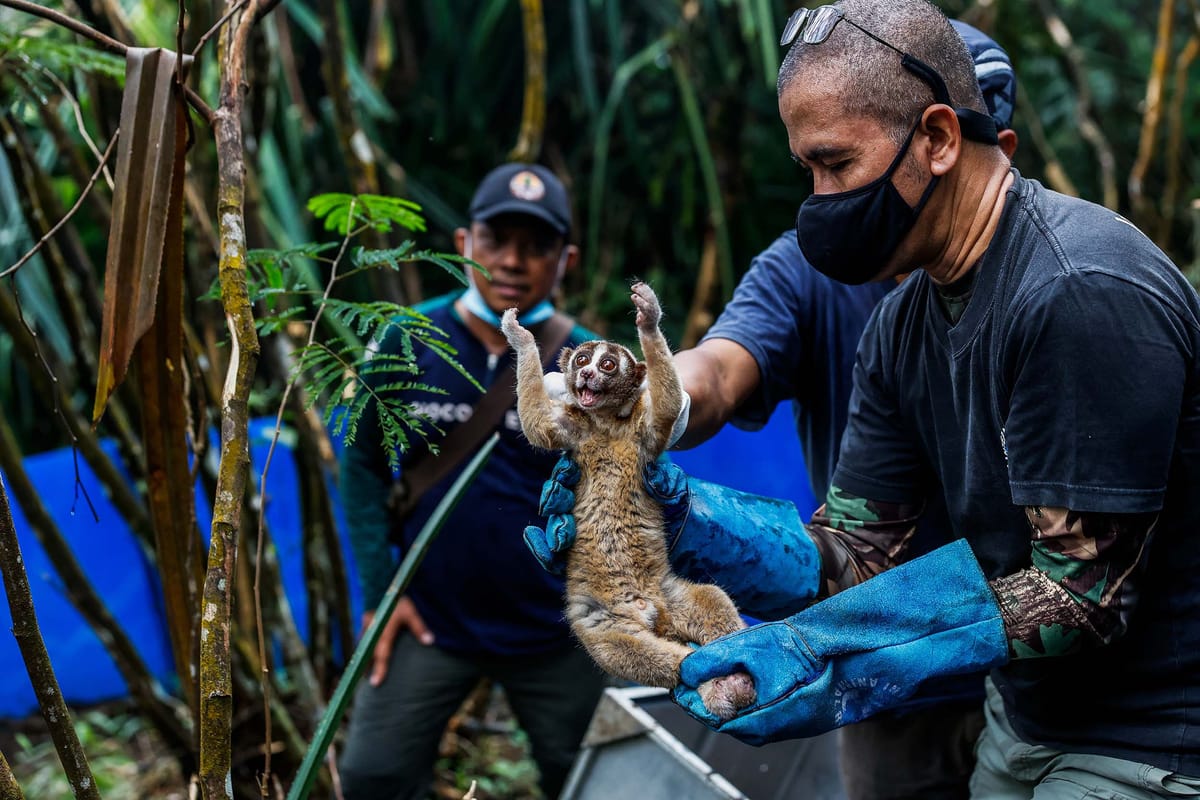

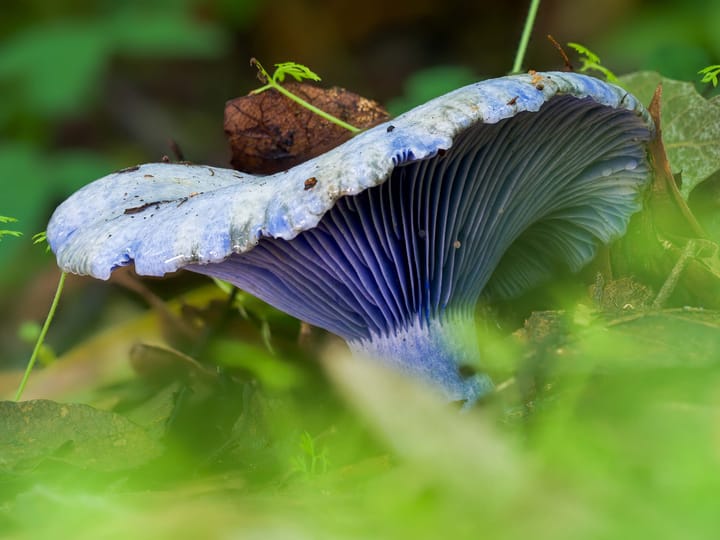
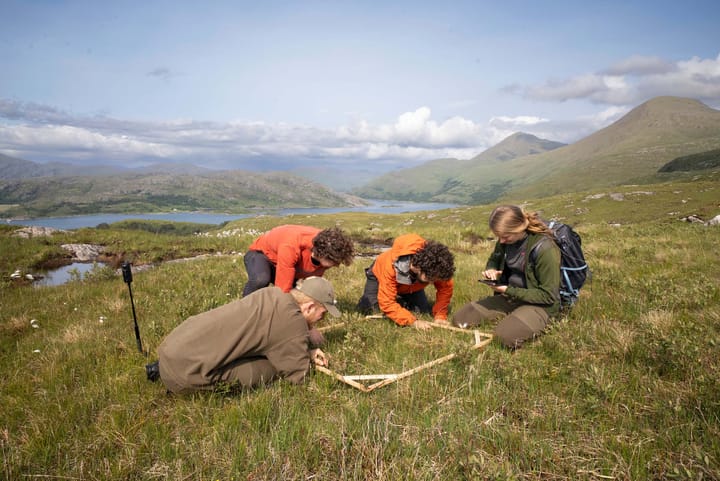


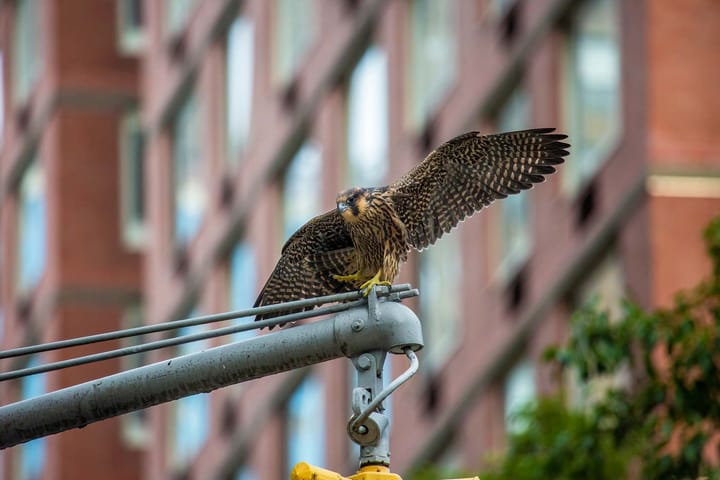

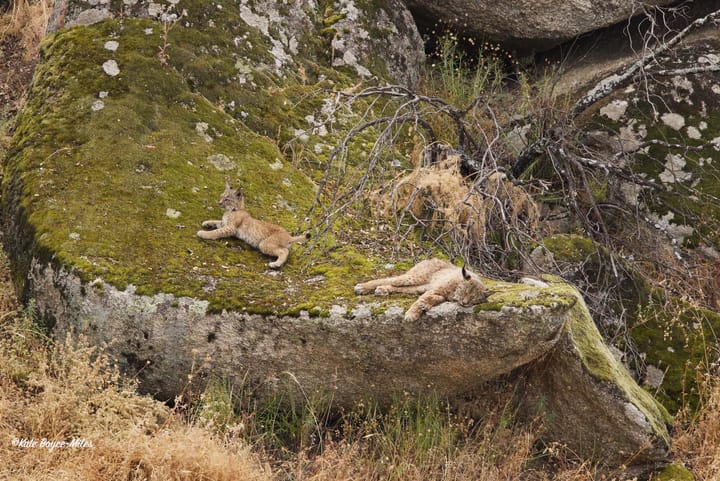
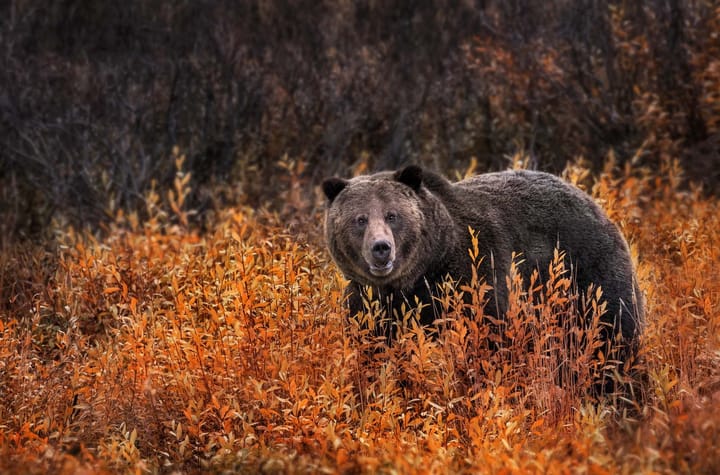

Comments ()